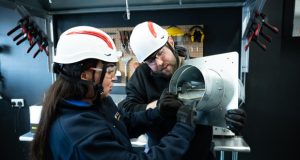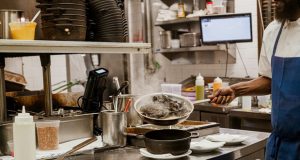As society remains in limbo due to the ongoing pandemic, cleaning and hygiene continues to play a crucial role on the frontline. Karoline Rigby, Operations Manager at Kingdom Cleaning, explains why COVID cleaning must be backed up by data.
The spotlight on the cleaning industry has never been brighter. After all, we have played an important role in reducing the spread of COVID-19 since the virus hit our shores back in early 2020.
Today, as society remains partly open for business, hygiene-conscious companies are doing their best to protect their returning workforce from infection. From regular touch point sanitation, to deep cleans and fogging, the demand for professional cleaning has soared.
However, the events of the past year have understandably left many feeling anxious. In fact, according to a recent survey, an estimated 60 per cent* of UK employees do not want to return to the office until the vaccination roll-out is complete. The study found that safety and cleanliness levels were the main cause of their concerns (55 per cent).
The pressure for business owners to reassure their staff and customers about cleanliness levels is at an all-time high. People want to know that their surrounding environments are safe. And this is where data can significantly boost confidence.
Trust the data
Data is an incredibly powerful tool. It has the ability to transform the way a business operates, increasing efficiency and informing smarter decision making. When applied in the professional cleaning industry, it can significantly improve hygiene levels, as well as provide proof of efficacy.
In today’s vulnerable world, customers want to know that their cleaning provisions can stand up to the likes of coronavirus. By putting our practices to the test and really scrutinising the data, we can ensure that we deliver the highest standards, with the facts to back our claims up.
Gathering this data doesn’t have to be complex. By measuring hygiene levels before and after a clean, we can start to build up a bigger picture that will shape our processes.
One of the best data pools for our industry can be gathered with Adenosine Triphosphate (ATP) testing. ATP is the energy molecule found in all living things, making it the ideal indicator when trying to determine if a surface is clean or not.
This process involves take a sample from a surface before and after it has been cleaned with a small swab. This is then placed into a handheld device and a reading is given within seconds, demonstrating the effectiveness of the cleaning.
From these readings, we can get a real feel for hot spots and problem areas, allowing us to tweak and bolster our processes for future cleans. Through continuous testing, we can check that these adjustments are working, with the ultimate aim of creating a tailored cleaning regime that delivers proven results.
SAFER
In order to instil confidence amongst our customers, we launched our own ATP testing regime last year. SAFER involves five key steps:
1. Swab of key touch points, risk areas, and high traffic areas
2. Analysis of swab results using ATP technology
3. Formulation of tailored plan, methodology, and cleaning regime based on the results
4. Execute the plan, with focused cleaning of areas showing higher biological residues
5. Repeat monitoring and adjustments for continuous improvements and to identify high risk areas
To promote transparency, our system uses data analysis software, which allows both our cleaning operatives and customers to monitor hygiene levels at the touch of a button. Our SAFER dashboard has the ability to track test results, identify problem areas, automatically generate reports, and formulate plans.
By providing our clients with access to this information, they can be confident that we have carried out our duties to the highest of standards. Not only does this improve our working relationship, but it also enables them to reassure their own employees and visitors that their premises are truly COVID-secure.





